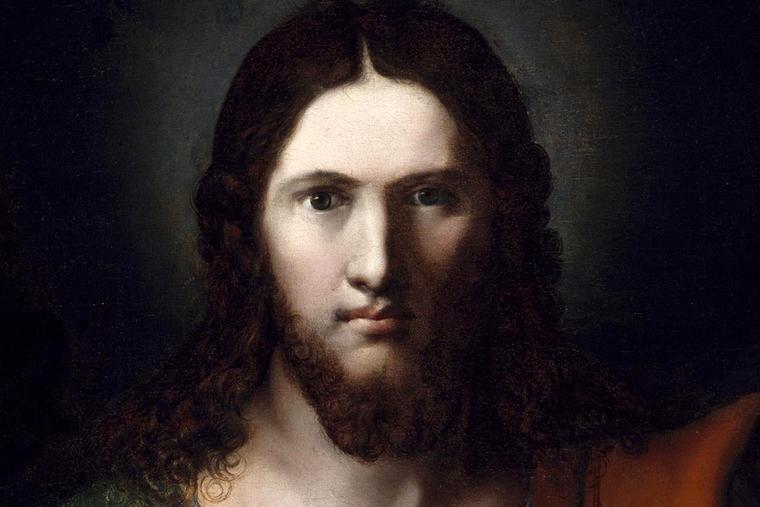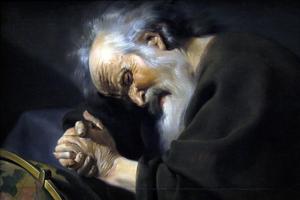Introduction to Christology 101 — Our Lord Jesus Christ Is True God and True Man
“Jesus Christ is true God and true man, in the unity of his divine person; for this reason he is the one and only mediator between God and men.” (CCC 480)

Growing up, I recall with great affection the fact that during Holy Week, NBC would air the 1977 television miniseries, Jesus of Nazareth. Directed by Franco Zeffirelli, this large-scale production was of British and Italian origin and was filled with a celebrity cast, including Anthony Quinn, James Earl Jones, Anne Bancroft, Olivia Hussey and Ernest Borgnine.
I specifically remember when it was broadcast on New York’s television channel NBC-4 in 1984. For the first time, the story of the Gospel of Jesus Christ really drew me in and I wanted to know more. In that sixth-grade year at the parish grade school in Brooklyn, Holy Name of Jesus, we had been studying the Sacred Scriptures. We were armed with the Good News Bible (which, years later, as a professor of theology, I can’t really suggest that you use this particular translation for any serious study) and we had a fairly good religion textbook for its day. I went to the school library and as I said, I wanted to know more about this Jesus of Nazareth.
Later on in the high school I attended, Cathedral Prep Seminary in Elmhurst, New York, we had in sophomore year a class taught by a learned diocesan priest — a class that, in reality, could have been at least a university-level class. The teacher was a man of deep faith and he made me, for the very first time, think theologically about the New Testament.
In the college-level seminary, I had the opportunity to study Christology for the very first time and our textbook was Interpreting Jesus by Jesuit Father Gerald O’Collins (1983). Both the class and the textbook suitably impressed me and I had no idea that in a few years, I would be assigned to Rome as a seminarian at the Pontifical North American College and to have my theological studies at the Pontifical Gregorian University where Father O’Collins taught Christology. In my time in Rome, I had Father O’Collins for his introductory class in Christology and Soteriology and then as my tesina(or master’s thesis) director for which I focused on biblical Christology — the question of the historical Jesus.
Although I did not write my theology doctorate in the field of Christology, I have had the opportunity over the years of my priesthood to teach classes in Christology and they are among my absolute favorites to teach.
Simply put, as I have stated in my previous article in this series, I love the study of Christology. And I would like to give you a chance to learn more about this wonderful field of theology. In many ways, you might wish to consider this series of articles that I am writing on Christology as a kind of self-study in which I can guide you. In each of these articles on Christology, I will give you a text upon which to reflect, usually from Sacred Scripture or the sacred Tradition of the Church or from the magisterium, the official teachings of the Church.
Therefore, as we begin this reflection on the person and natures of Our Lord Jesus, may I ask us to read this one small excerpt and to reflect on one question:
“And when the sixth hour had come, there was darkness over the whole land until the ninth hour. And at the ninth hour Jesus cried with a loud voice, “E’lo-i, E’lo-i, la’ma sabach-tha’ni?” which means, “My God, my God, why hast thou forsaken me?” And some of the bystanders hearing it said, “Behold, he is calling Eli′jah.” And one ran and, filling a sponge full of vinegar, put it on a reed and gave it to him to drink, saying, “Wait, let us see whether Eli’jah will come to take him down.” And Jesus uttered a loud cry, and breathed his last. And the curtain of the temple was torn in two, from top to bottom. And when the centurion, who stood facing him, saw that he thus breathed his last, he said, “Truly this man was the Son of God!” (Mark 15:33-39, Revised Standard Version, Catholic Edition)
A question for reflection: What events in your life have led you as a believer to proclaim with the centurion that this man, Jesus of Nazareth, truly IS the Son of God?
- Keywords:
- Jesus christ
- christology

















